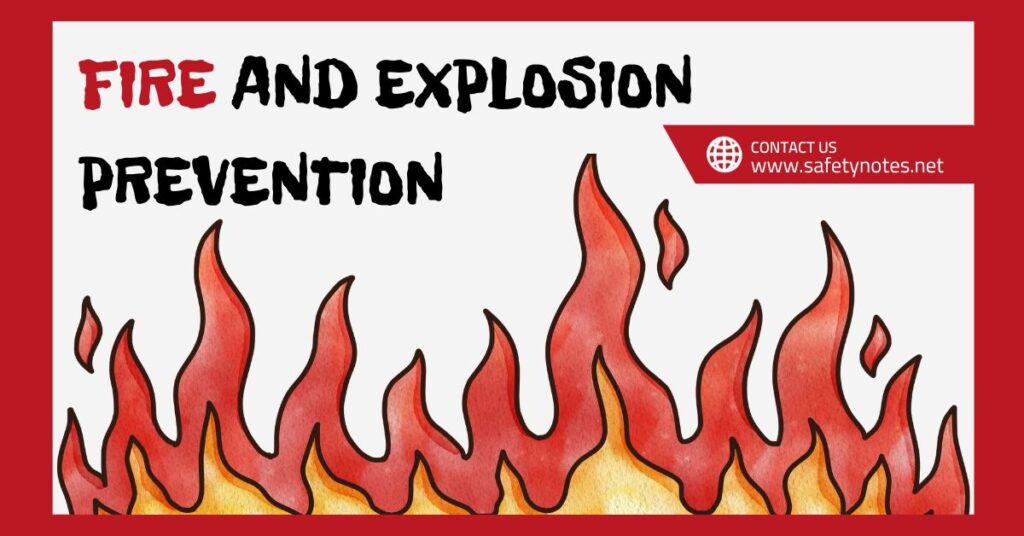
Introduction
In the world of occupational safety, fire and explosion prevention is paramount. Incidents of fire and explosions can lead to disastrous consequences, including loss of lives, severe injuries, extensive property damage, and prolonged business disruption. These incidents are typically triggered by dangerous substances present at the workplace and improper handling or storage of materials. This Safety Toolbox Talk aims to delve deeper into the subject, offering insights into the risks and crucial control measures needed to prevent such incidents.
Dangerous Substances: The Invisible Threat
Dangerous substances refer to any materials used or present at work that could lead to harm if not properly controlled. This harm typically manifests in the form of fires, explosions, or uncontrolled chemical reactions. What makes these substances particularly treacherous is their ubiquity across various workplaces.
These substances span a wide spectrum, including solvents used in cleaning, paints and varnishes applied in decoration, flammable gases like Liquefied Petroleum Gas (LPG), and even dust from machining and sanding operations. The key to managing these substances effectively is understanding their properties, potential hazards, and safe handling procedures.
Explosive Atmospheres: A Ticking Time Bomb
An explosive atmosphere is essentially a concoction of a dangerous substance or substances (in the form of gas, mist, dust, or vapor) mixed with air, which has the potential to catch fire or explode. While the presence of an explosive atmosphere does not always result in an explosion, if it does get ignited, the flames can spread rapidly, leading to devastating consequences.
The formation of an explosive atmosphere can be influenced by several factors, such as the type of dangerous substance involved, the temperature, and the ventilation conditions. Therefore, effective risk management involves regular monitoring of these factors and implementing appropriate control measures.
Material Storage: The First Line of Defense
Proper storage of materials is a critical aspect of fire and explosion prevention. Flammable materials, in particular, must be stored appropriately to minimize the risk of ignition. This involves keeping these materials away from potential ignition sources and storing them in shaded, cool places to prevent spontaneous combustion.
Moreover, it’s essential to limit the amount of material brought onto the site from storage to only what’s needed for a day’s work. This not only reduces the potential fuel for a fire but also makes it easier to manage the substances effectively.

Control Measures: Fire and explosion prevention
Electrical Ignition Hazards
Electrical systems are a common source of ignition in many workplace fires. To mitigate this risk, it’s essential to avoid overloading circuits, which can lead to overheating and potentially cause a fire. Additionally, only approved electrical devices should be used in the workplace, and any damaged or worn wiring should be discarded immediately.
Good Housekeeping
Good housekeeping practices play a significant role in preventing fire and explosions. This involves reducing the amount of flammable and combustible materials on-site to the minimum necessary. Regular and prompt clearance of rubbish, especially those that can burn, is also crucial in preventing fire incidents.
Moreover, unnecessary stockpiling of combustible materials such as polystyrene, thin tarpaulin, and plastic sheets should be avoided. These materials can easily catch fire and contribute to the rapid spread of flames.
Conclusion
Understanding and managing the risks associated with dangerous substances and explosive atmospheres is fundamental to preventing fires and explosions in the workplace. By adhering to proper storage practices, implementing effective control measures, and promoting good housekeeping, we can build a safer working environment for everyone. Remember, prevention is always better than cure, especially when it comes to fire and explosion safety.
